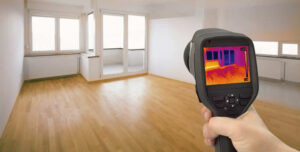6 Ways to Locate Concealed Water Leakages in Your Home
6 Ways to Locate Concealed Water Leakages in Your Home
Blog Article
How do you really feel when it comes to Leaking water lines?

Early detection of leaking water lines can mitigate a possible calamity. In addition to conserving you money, it will lessen the worry as well as disappointment. The moment you locate a leakage, calling your plumber for repair work is the best remedy. Some small water leakages may not be noticeable. Below are some hacks that assist if you can not identify it with your naked eyes.
1. Check Out the Water Meter
Every house has a water meter. Inspecting it is a proven way that helps you find leaks. For beginners, switch off all the water resources. Ensure no one will purge, utilize the tap, shower, run the washing maker or dish washer. From there, most likely to the meter and watch if it will certainly transform. Since no one is utilizing it, there ought to be no motions. That shows a fast-moving leakage if it relocates. If you detect no modifications, wait a hr or 2 and examine back once again. This suggests you might have a slow-moving leakage that could even be underground.
2. Inspect Water Usage
Assess your water bills and track your water intake. As the one paying it, you need to observe if there are any inconsistencies. If you spot sudden changes, in spite of your intake coinciding, it means that you have leakages in your plumbing system. Keep in mind, your water bill need to fall under the exact same range each month. A sudden spike in your bill indicates a fast-moving leak.
A steady increase every month, even with the same practices, shows you have a slow leak that's also slowly escalating. Call a plumber to thoroughly examine your home, particularly if you feel a warm location on your flooring with piping below.
3. Do a Food Coloring Examination
When it comes to water usage, 30% comes from toilets. If the shade somehow infiltrates your dish during that time without flushing, there's a leak in between the container and bowl.
4. Asses Outside Lines
Don't neglect to inspect your exterior water lines as well. Should water leak out of the connection, you have a loosened rubber gasket. One tiny leakage can waste tons of water as well as spike your water expense.
5. Inspect as well as Assess the Circumstance
Property owners should make it a routine to examine under the sink counters and even inside cupboards for any kind of bad odor or mold and mildew growth. These two red flags suggest a leakage so punctual focus is required. Doing regular examinations, also bi-annually, can save you from a major problem.
If you recognize your house is already old, maintain a careful eye on your heating units, hose pipes, pipes and so on. Look for discolorations and damaging as the majority of pipes and devices have a life expectancy. They will certainly likewise naturally wear away because of tear and also wear. If you believe leaking water lines in your plumbing system, do not wait on it to rise. Call a professional plumber today so you don't wind up with an awful mess in your house.
Early detection of leaking water lines can reduce a prospective catastrophe. Some small water leakages may not be visible. Inspecting it is a surefire way that helps you discover leakages. One tiny leakage can waste tons of water and also spike your water expense.
If you suspect leaking water lines in your plumbing system, don't wait for it to intensify.
WARNING SIGNS OF WATER LEAKAGE BEHIND THE WALL
PERSISTENT MUSTY ODORS
As water slowly drips from a leaky pipe inside the wall, flooring and sheetrock stay damp and develop an odor similar to wet cardboard. It generates a musty smell that can help you find hidden leaks.
MOLD IN UNUSUAL AREAS
Mold usually grows in wet areas like kitchens, baths and laundry rooms. If you spot the stuff on walls or baseboards in other rooms of the house, it’s a good indicator of undetected water leaks.
STAINS THAT GROW
When mold thrives around a leaky pipe, it sometimes takes hold on the inside surface of the affected wall. A growing stain on otherwise clean sheetrock is often your sign of a hidden plumbing problem.
PEELING OR BUBBLING WALLPAPER / PAINT
This clue is easy to miss in rooms that don’t get much use. When you see wallpaper separating along seams or paint bubbling or flaking off the wall, blame sheetrock that stays wet because of an undetected leak.
BUCKLED CEILINGS AND STAINED FLOORS
If ceilings or floors in bathrooms, kitchens or laundry areas develop structural problems, don’t rule out constant damp inside the walls. Wet sheetrock can affect adjacent framing, flooring and ceilings.
https://www.servicemasterbyzaba.com/blog/how-to-detect-water-leakage-in-walls/

I came across that entry on Finding hidden leaks when looking around the web. Sharing is nice. Who knows, you may be helping someone out. Thanks for taking the time to read it.
Report this page